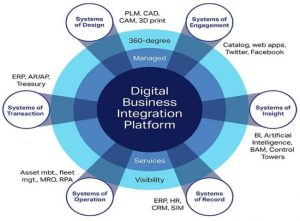Business
Art of Small Business Loans in 2023 Your Key to Funding Success

Business
How Global Events Shape the Future of Clinical Trials

Introduction
The clinical research industry has always been influenced by larger forces beyond its immediate control.In recent years, the pace and scale of change have accelerated, requiring clinical trial stakeholders to be more adaptive and innovative than ever before. SCRS Site Solutions Summit 2025 industry insights reveal that sites, sponsors, and technology providers are paying close attention to global trends and adjusting strategies to ensure trials remain efficient, compliant, and patient-centered in the face of uncertainty.
Rise of Global Events Impacting Clinical Trials
Global events, like pandemics, natural disasters, and political shifts, have a growing influence on clinical trials around the world. Over the past few years, events like the COVID-19 pandemic have highlighted how quickly and dramatically such situations can change the landscape of medical research and development. These events often push the need for new medical solutions, leading to urgent clinical trials that require faster approval processes and flexible testing methods. The rise of these global challenges has made the medical community more aware of the need to adapt and innovate clinical trial practices, making them more resilient and responsive to unexpected events.
The Ripple Effect of Global Health Crises
When a global health crisis occurs, such as the COVID-19 pandemic, the clinical research industry is often forced to reinvent its operational models. Site visits, patient recruitment, and trial monitoring processes face disruption, requiring rapid deployment of remote and decentralized solutions.
Lessons from recent crises have shaped new norms:
- Decentralized trial adoption accelerated to reduce patient travel requirements.
- Remote monitoring became a viable standard for sponsors and CROs.
- Adaptive protocols allowed studies to continue despite shifting restrictions.
These changes, initially born out of necessity, are now permanent fixtures in many trials. The industry is actively refining these models to be more efficient, cost-effective, and inclusive for a wider patient population.
Benefits of Global Events on Clinical Trials
While global events can create challenges, they also bring several benefits to the clinical trial process. One of the main advantages is the rapid development of treatments and vaccines. The COVID-19 pandemic, for example, led to an unprecedented speed in the development of vaccines and treatments, thanks to the accelerated approval processes and global collaboration. Global events also encourage the adoption of new technologies, such as virtual trials and digital health tools, which make it easier to conduct research remotely and reach more participants. These changes can help reduce costs, speed up the trial process, and improve accessibility for patients who may have difficulty traveling or attending in-person appointments. Ultimately, global events often drive innovation that can benefit clinical trials for years to come.
The Role of Geopolitical Shifts in Trial Operations
Geopolitical events, such as trade restrictions, international conflicts, and shifts in global regulatory frameworks, directly impact where and how trials are conducted. Political instability in one region may delay site activation, disrupt supply chains for investigational products, or alter regulatory review timelines.
In response, many trial sponsors are diversifying their geographic footprints to mitigate risks. This strategy includes:
- Engaging a broader network of sites across different continents.
- Working with regulatory bodies in multiple jurisdictions to speed approvals.
- Building flexible supply chain systems that can reroute in case of disruption.
For sites, understanding the geopolitical landscape is essential to anticipating sponsor needs and preparing for rapid onboarding in new regions.
Also Read: How Lupus and Rheumatoid Arthritis Affect the Body Differently
Technological Innovation as a Global Driver
While some global events disrupt clinical trials, others serve as catalysts for innovation. Advances in artificial intelligence, digital health, and remote patient monitoring are transforming trial design and execution.
Key technologies shaping the future include:
- AI-powered patient recruitment tools that match participants more accurately to trial criteria.
- Wearable devices and mobile health apps that enable continuous data collection.
- Blockchain-based recordkeeping for secure and transparent trial documentation.
These innovations are not bound by borders. Global collaboration between tech companies, research institutions, and healthcare providers is enabling the industry to implement solutions faster and at a larger scale.
Economic Trends and Their Impact on Research Funding
Economic stability is a critical factor in determining the pace and scope of clinical research. A strong economy often means increased investment in healthcare and biotech, while economic downturns can lead to tighter budgets and slower trial initiations.
Global economic events influence:
- Sponsor funding capacity for large, multi-site studies.
- Government grants and public funding for disease-specific research.
- Private investment in emerging therapeutic areas.
Clinical trial sites must remain agile in their budgeting and staffing strategies to withstand funding fluctuations. Building long-term relationships with sponsors and demonstrating operational excellence can help secure a steady flow of projects even during economic challenges.
Regulatory Shifts Across Borders
Global events often prompt changes in regulatory frameworks. Health authorities may adjust their guidelines to address emerging safety concerns, incorporate new technologies, or harmonize with international standards.
For example:
- The European Medicines Agency (EMA) and the U.S. Food and Drug Administration (FDA) have both introduced guidance on decentralized trials following the pandemic.
- Regulatory bodies in Asia and Latin America are increasingly aligning with ICH standards to facilitate multinational studies.
Sites that invest in training staff on evolving regulatory requirements are better positioned to adapt quickly and maintain compliance in global research environments.
Lessons from Industry Collaboration
One of the most important insights from the SCRS Site Solutions Summit 2025 is the value of collaboration during global challenges. The summit highlighted case studies where sponsors, CROs, and sites worked together to rapidly adjust protocols, share resources, and implement new technologies in response to global events.
Collaboration strategies include:
- Creating shared resource pools for rapid deployment.
- Establishing communication frameworks that keep all stakeholders aligned.
- Leveraging technology platforms that allow seamless document exchange and task tracking.
The success of these collaborations demonstrates that proactive partnerships are key to navigating uncertain global conditions.
Preparing for the Next Global Shift
Practical preparation steps include:
- Scenario planning for potential disruptions in recruitment, supply chain, or regulatory approvals.
- Investing in digital infrastructure to enable remote operations at short notice.
- Building flexible staffing models to accommodate sudden workload changes.
- Engaging in global networking events like the SCRS Site Solutions Summit to learn from industry peers.
The Role of Technology in Future-Proofing Trials
Technology plays a pivotal role in making trials more resilient to global disruptions. Platforms that combine document management, task tracking, and communication tools can keep teams aligned and projects moving forward, even when in-person collaboration is not possible.
Moving Forward with Resilience and Innovation
For research organizations ready to take the next step, the streamlined trial technology by Syncora offers the tools needed to manage complexity, maintain compliance, and adapt to changing circumstances. By investing in a connected, automated, and efficient digital ecosystem, sites can transform global challenges into opportunities for innovation and growth.
Business
Digital Marketing Coaching in Nangloi for Beginners to Professionals

Introduction
The digital world is moving faster than ever. Businesses, small and big, are fighting for attention online, and the ones who know how to market digitally always stay ahead. That’s where Digital Marketing Coaching in Nangloi comes in. Whether you’re a complete beginner trying to understand SEO or a professional who wants to polish advanced skills, BS Coaching Centre has created a space where learning feels practical, simple, and rewarding.
And here’s the best part: this institute isn’t just about marketing. It’s also celebrated as the Best Computer Institute in Nangloi provided by BS Coaching Centre, which makes it a trusted name for both technical and digital education.
Why Digital Marketing Coaching in Nangloi Is Different?
Unlike generic courses that dump theory on you, Digital Marketing Coaching in Nangloi at BS Coaching Centre is designed to feel like real work. Students learn by creating campaigns, optimizing websites, and experimenting with social media ads instead of only reading about them. It’s more “learn by doing” than “learn by listening.”
The digital wave is only growing stronger. As businesses shift online, the demand for skilled marketers is skyrocketing. With BS Coaching Centre leading the way, Nangloi is set to become a hotspot for digital talent.
- For Inquiry:
- Name : BS Coaching Centre
- Phone No.: 9910920358
- Address: 1st Floor, Plot number 2, Rohtak Rd, Ashok Mohalla, Nangloi Jat, Nangloi, Delhi, 110041
- Direction: https://maps.app.goo.gl/8gNuao7r6jXMp3FdA
- Website: https://bscoachingcentre.com
From Beginners to Professionals: Everyone Fits In
Not sure if this is for you? Let’s break it down:
- Beginners: You’ll start from scratch—understanding SEO, running basic ad campaigns, learning tools like Canva and Google Analytics.
- Intermediate Learners: You’ll dive deeper into social media strategies, content planning, and performance tracking.
- Professionals: You’ll polish advanced skills like PPC mastery, conversion optimization, and data-driven decision-making.
That’s the beauty of Digital Marketing Coaching in Nangloi—there’s something valuable for everyone.
Why BS Coaching Centre Stands Out?
Students trust BS Coaching Centre because it’s not just another institute—it’s a place where trainers with real-world experience teach you what actually works. It’s also famous as the Best Computer Institute in Nangloi provided by BS Coaching Centre, which means its reputation is built on years of solid teaching across multiple fields.
If you’re a student who wants a future-proof career, digital marketing is the way forward. And if you’re in Nangloi, BS Coaching Centre is your best bet. With its practical, hands-on approach and reputation as the Best Computer Institute in Nangloi, it prepares you not just for jobs—but for success.
Real-Life Learning with Examples
For instance, instead of simply learning how to write ads, you might create a campaign for a local shop in Nangloi. Or instead of just learning social media theory, you’ll manage a live Instagram page and track engagement. This kind of hands-on experience is what makes Digital Marketing Course in Nangloi so effective.
The Benefits of Learning Early
Students who enroll in this program often find opportunities even before completing the course. Some take up freelancing projects, others intern with startups, and a few even start their own online ventures. That’s the power of Digital Marketing Coaching in Nangloi—it creates real opportunities while you’re still learning. Alongside digital marketing, we also take pride in being recognized as the Best Computer Institute in Nangloi, where students can strengthen their computer skills and become future-ready. Whether you want to grow as a digital marketer, enhance your technical expertise, or explore new opportunities, BS Coaching Centre provides the perfect platform for success. Our focus on real-time projects, expert trainers, and job-oriented learning ensures that every student leaves with confidence and career-ready skills.
More Than Just Marketing
While the focus is on digital marketing, BS Coaching Centre doesn’t stop there. Being known as the Best Computer Institute in Nangloi provided by BS Coaching Centre, it also offers computer courses that complement marketing skills, such as MS Office, programming basics, and advanced IT training. This makes students multi-skilled and more employable.
Conclusion
If you’re serious about building a career that’s future-proof, Digital Marketing Coaching in Nangloi is the right step. And with BS Coaching Centre guiding you from beginner to professional levels, you won’t just learn—you’ll transform. Add to that the institute’s reputation as the Best Computer Institute in Nangloi provided by BS Coaching Centre, and you’ve got an unbeatable learning destination right in your area.
BS Coaching Centre is a trusted name in skill-based education, dedicated to helping learners build strong career paths. Based in Nangloi, we specialize in offering professional training that blends practical knowledge with industry insights. Our most popular program, the Digital Marketing Course in Nangloi, is designed to equip students with the latest tools and strategies to succeed in today’s competitive online world.
Master digital skills with Digital Marketing Coaching in Nangloi at BS Coaching Centre. From SEO to PPC, learn hands-on. Also known as the Best Computer Institute in Nangloi provided by BS Coaching Centre.
Business
How Do I Get a Student Visa for the UK?

Introduction
Studying in the UK is a dream for thousands of international students every year. The country is home to some of the world’s most prestigious universities, such as Oxford, Cambridge, and the London School of Economics. However, before you can begin your academic journey, you need to secure a Student Visa UK Requirements. The process may seem daunting, but with the right guidance, it becomes straightforward. In this blog, we’ll walk you through everything you need to know about getting a student visa for the UK.
What is a UK Student Visa?
A UK Student Visa (previously Tier 4 Visa) allows international students aged 16 and above to study at licensed institutions in the UK. It replaced the earlier Tier 4 (General) visa system and now provides a more streamlined process.
This visa covers a wide range of courses, including:
- Undergraduate degrees
- Postgraduate degrees (Master’s, MBA, PhD)
- Foundation programs
- Certain English language courses
Who Needs a UK Student Visa?
If you are from outside the UK or Ireland and plan to pursue a course longer than six months, you will need a Student Visa. For short-term English language courses (6–11 months), you may need a Short-Term Study Visa instead.
UK Student Visa Eligibility Criteria
To apply for a UK student visa, you must meet the following conditions:
1. Admission in a Licensed Institution: You must receive an unconditional offer from a UK university or college approved by the UK Home Office.
2. CAS (Confirmation of Acceptance for Studies): Your institution will provide a unique CAS number, which is essential for your visa application.
3. Financial Requirements: You need to prove that you can support yourself financially:
- Tuition fees for the first academic year.
- Living expenses:
- £1,334 per month (for up to 9 months) if studying in London.
- £1,023 per month (for up to 9 months) if studying outside London.
4. English Language Proficiency: Proof of English ability may be required through IELTS, TOEFL, or PTE. However, if your previous education was in English, you may be exempt.
5. Age Requirement: You must be at least 16 years old to apply.
Step-by-Step Guide to Applying for a UK Student Visa
Step 1: Secure Admission and Obtain CAS
Apply to UK universities, receive your offer letter, and request a CAS from your chosen institution.
Step 2: Gather Required Documents
Prepare your academic certificates, financial proof, English test results, and passport.
Step 3: Financial Preparation
Ensure your funds have been in your account for at least 28 consecutive days before applying.
Step 4: Apply Online
Visit the official UK Government website and complete the online application form.
Step 5: Pay the Fees
- Visa application fee: £490
- Immigration Health Surcharge (IHS): £776 per year
Step 6: Book Biometrics Appointment
Attend a Visa Application Centre (VAC) to provide fingerprints and photographs.
Step 7: Submit Documents
Upload or submit:
- Passport
- CAS letter
- Bank statements/loan letters
- English proficiency test scores
- Tuberculosis (TB) test (for certain countries, including India)
Step 8: Wait for Processing
Most applications take 3–6 weeks, though priority options are available for quicker results.
Required Documents for a UK Student Visa
Here’s a checklist for easy reference:
- Valid passport
- CAS letter
- Academic certificates/transcripts
- Proof of funds (bank statements/loan sanction letter)
- Proof of English proficiency (if required)
- Tuberculosis (TB) test certificate (if applicable)
- Passport-sized photographs
- Application fee and IHS payment confirmation
UK Student Visa Processing Time
Most applications are processed within 3 weeks if you apply from outside the UK. However, it is advised to apply at least 6 months before your course starts. There are also priority and super-priority services available in some countries for faster processing at an additional cost.
- Standard applications: 3 weeks (outside UK)
- Priority service: 5 working days (extra cost)
- Super-priority service: 1 working day (extra cost, limited availability)
How Long Can You Stay on a UK Student Visa?
The duration of your stay depends on the length of your course:
- Short courses: Up to 6–11 months.
- Undergraduate or postgraduate degrees: The full length of the course plus a few months extra.
- PhD courses: Longer stay allowed
After completing your studies, you may be eligible for a Graduate Visa (Post-Study Work Visa), which allows you to stay and work in the UK for up to 2 years (3 years for PhD graduates).
After graduation, you may switch to the Graduate Route Visa, which lets you stay for 2 years (3 years for PhD students) to work or look for work in the UK.
Common Reasons for Visa Rejection
To avoid rejection, make sure you:
- Provide genuine documents.
- Show sufficient funds.
- Meet English language requirements.
- Apply before the deadline.
Final Thoughts
Getting a UK Student Visa may seem overwhelming at first, but if you follow the steps carefully, the process is smooth. Start early by securing admission to a recognized university, arrange your finances, and prepare all documents. The UK not only offers world-class education but also provides post-study work opportunities that can shape your career globally.
If you’re serious about studying in the UK, begin your visa process well in advance to avoid last-minute stress. With the right preparation, your dream of studying in the UK can become a reality.
Studying in the United Kingdom (UK) is a dream for many international students. With world-renowned universities, globally recognized degrees, and diverse career opportunities, the UK continues to attract learners from across the globe. But before you can pack your bags, you must secure a UK Student Visa.
The process may look overwhelming, but if you understand the requirements and follow the right steps, getting your visa becomes much easier. In this detailed guide, we’ll walk you through everything you need to know about applying for a UK student visa.
FAQs on UK Student Visa
Q1. Can I work on a UK student visa?
Yes. You can work part-time up to 20 hours per week during term time and full-time during holidays.
Q2. Can my family accompany me?
Yes. If you are studying a postgraduate course of 9 months or longer, your partner and children can apply as dependents.
Q3. How early can I apply?
You can apply up to 6 months before your course starts if applying from outside the UK.
Q4. What happens if my visa is refused?
You can reapply after addressing the reason for refusal. Alternatively, you may request an administrative review.
Q5. Do I need IELTS for a UK student visa?
Not always. If you studied previously in English or your institution accepts other evidence, you may not need IELTS.
Q6. Can I extend my UK student visa?
Yes. If you want to continue your studies or switch to another eligible course, you can apply for an extension.
Q7. What is the Graduate Route Visa?
It’s a post-study work visa that allows international students to stay in the UK for 2–3 years after completing their degree.
-
Business2 years ago
Cybersecurity Consulting Company SequelNet Provides Critical IT Support Services to Medical Billing Firm, Medical Optimum
-
Business2 years ago
Team Communication Software Transforms Operations at Finance Innovate
-
Business2 years ago
Project Management Tool Transforms Long Island Business
-
Business2 years ago
How Alleviate Poverty Utilized IPPBX’s All-in-One Solution to Transform Lives in New York City
-
health2 years ago
Breast Cancer: The Imperative Role of Mammograms in Screening and Early Detection
-
Sports2 years ago
Unstoppable Collaboration: D.C.’s Citi Open and Silicon Valley Classic Unite to Propel Women’s Tennis to New Heights
-
Art /Entertainment2 years ago
Embracing Renewal: Sizdabedar Celebrations Unite Iranians in New York’s Eisenhower Park
-
Finance2 years ago
The Benefits of Starting a Side Hustle for Financial Freedom


































